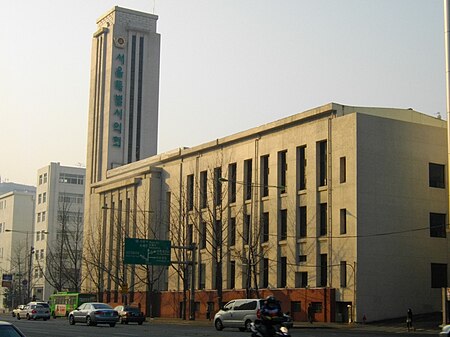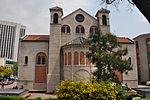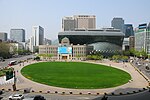Bumingwan
1935 establishments in KoreaBuildings and structures completed in 1935Buildings and structures of Korea under Japanese ruleCinemas and movie theaters in Korea under Japanese ruleCinemas and movie theaters in South Korea ... and 8 more
Culture of Korea under Japanese ruleFormer cinemasHistoric buildings and structures in SeoulJongno DistrictKeijōNational Assembly (South Korea)Registered Cultural Heritage of South KoreaTheatres in South Korea

Bumingwan (Korean: 부민관; Hanja: 府民館; MR: Pumin'gwan; Modified Hepburn: Fuminkan) is a historic building in Seoul, South Korea. It currently serves as a building for the Seoul Metropolitan Council. It was designated a Registered Cultural Heritage in 2002.
Excerpt from the Wikipedia article Bumingwan (License: CC BY-SA 3.0, Authors, Images).Bumingwan
Sejong-daero 21-gil, Seoul Myeong-dong
Geographical coordinates (GPS) Address Nearby Places Show on map
Geographical coordinates (GPS)
| Latitude | Longitude |
|---|---|
| N 37.5676 ° | E 126.9767 ° |
Address
Sejong-daero 21-gil
04519 Seoul, Myeong-dong
South Korea
Open on Google Maps








